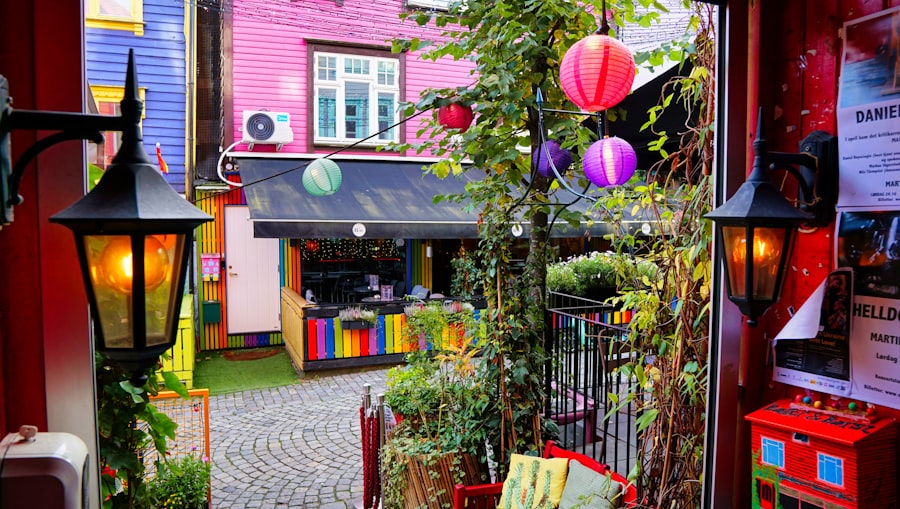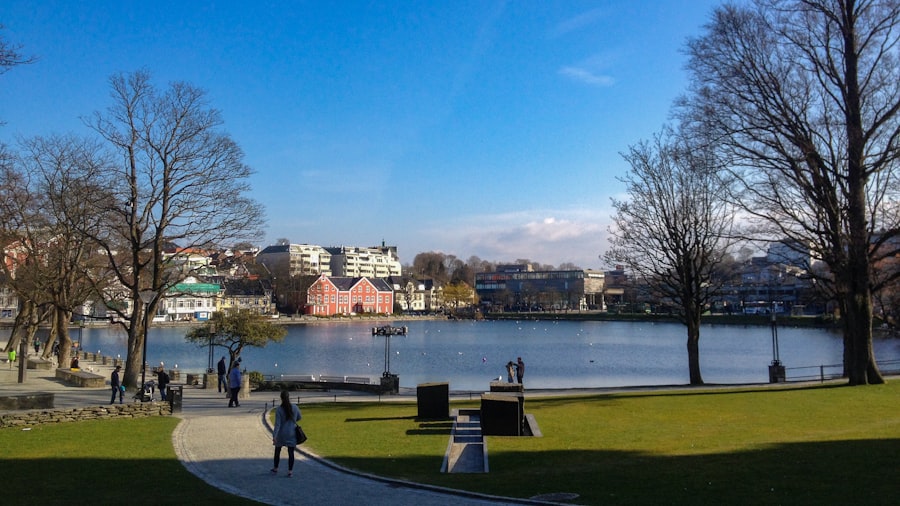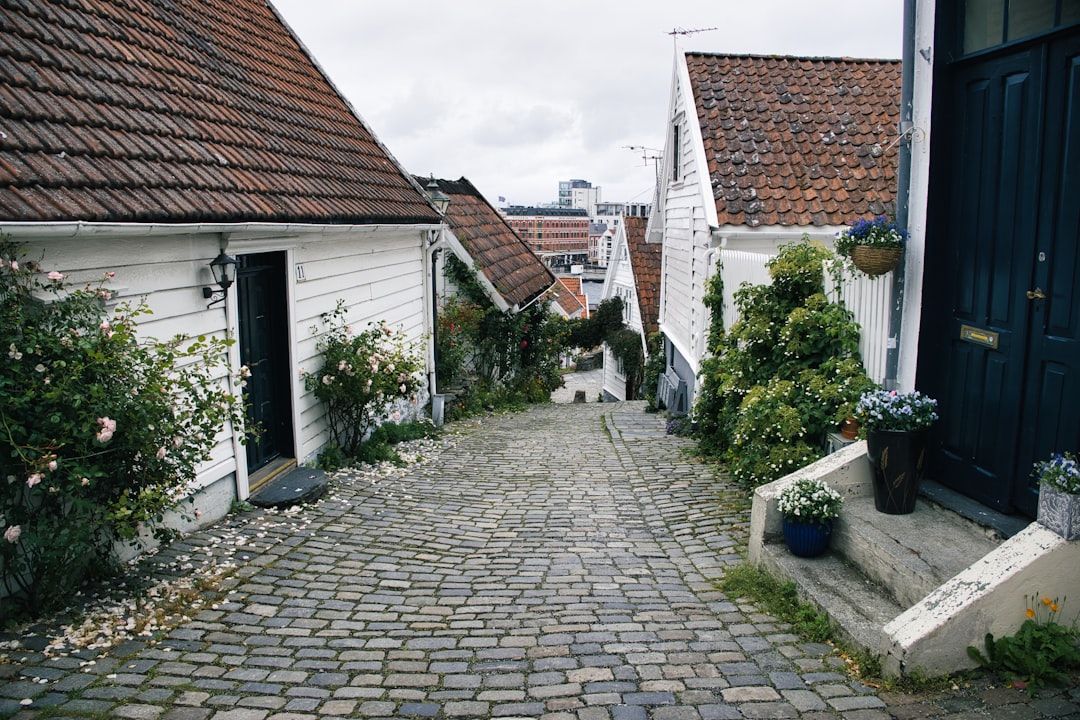Natural light holds a significant place in Norwegian culture, deeply intertwined with the country’s geographical and climatic conditions. With long, dark winters and brief, bright summers, the Norwegians have developed a profound appreciation for sunlight. This appreciation is not merely aesthetic; it is a cultural cornerstone that influences daily life, social interactions, and even architectural choices.
The fleeting nature of daylight during winter months fosters a communal spirit, as people gather to enjoy the sun whenever it graces the landscape. Festivals and celebrations often revolve around the arrival of spring and the return of longer days, highlighting the cultural significance of natural light. Moreover, the Norwegians have a unique relationship with their environment, which is reflected in their art, literature, and lifestyle.
The interplay of light and shadow in the dramatic Norwegian landscape has inspired countless artists and writers. The concept of “friluftsliv,” or open-air living, embodies this connection to nature and light, encouraging people to embrace outdoor activities regardless of the season. This cultural ethos promotes a lifestyle that values the benefits of natural light, fostering a sense of well-being and community among Norwegians. Plan your relocation with confidence. Book a personal meeting with the Norway Relocation Group today. https://norwayrelocation.no/one-hour-strategy-session/
Summary
- Natural light is deeply ingrained in Norwegian culture, influencing everything from architecture to daily routines.
- Exposure to natural light has a significant impact on mental and physical wellbeing, contributing to improved mood and productivity.
- Norwegian home design prioritises maximising natural light through large windows, open floor plans, and light-coloured interiors.
- Natural light not only enhances energy efficiency in homes but also reduces the need for artificial lighting.
- Traditional Norwegian architecture incorporates natural light through features like large windows and skylights, creating a connection with the outdoors.
How Natural Light Impacts Mental and Physical Wellbeing
The impact of natural light on mental and physical well-being is profound and well-documented. Exposure to sunlight stimulates the production of serotonin, a neurotransmitter that contributes to feelings of happiness and well-being. In Norway, where winter days can be short and dreary, the lack of sunlight can lead to Seasonal Affective Disorder (SAD), a type of depression that occurs at certain times of the year.
To combat this, many Norwegians have adopted practices that maximise their exposure to natural light, such as taking walks during daylight hours or engaging in outdoor sports. Furthermore, natural light plays a crucial role in regulating circadian rhythms, which govern sleep patterns and overall health. Adequate exposure to daylight helps maintain a healthy sleep-wake cycle, promoting better sleep quality and overall physical health.
In a country where winter nights can last for up to 20 hours, understanding the importance of natural light becomes essential for maintaining mental clarity and physical vitality. By prioritising natural light in their daily routines, Norwegians can enhance their quality of life, even during the darkest months.
Maximising Natural Light in Norwegian Home Design

Incorporating natural light into home design is a fundamental aspect of Norwegian architecture. The use of large windows, skylights, and open floor plans are common features that allow sunlight to flood interior spaces. Architects and designers often prioritise orientation when planning homes, ensuring that living areas face south or west to capture maximum sunlight throughout the day.
This thoughtful approach not only enhances the aesthetic appeal of homes but also contributes to energy efficiency by reducing reliance on artificial lighting. Moreover, the use of reflective surfaces and light-coloured materials further amplifies the effects of natural light within homes. By strategically placing mirrors or using glossy finishes, homeowners can create an illusion of more space while enhancing brightness.
The emphasis on natural light in home design reflects a broader cultural commitment to well-being and sustainability, as it encourages a harmonious relationship between indoor environments and the natural world outside.
The Benefits of Natural Light for Energy Efficiency
Natural light is not only beneficial for mental and physical health but also plays a crucial role in energy efficiency. In Norway, where energy costs can be significant during long winters, maximising daylight can lead to substantial savings on electricity bills. By designing homes that harness natural light effectively, residents can reduce their dependence on artificial lighting during daylight hours.
This not only lowers energy consumption but also contributes to a more sustainable lifestyle. Additionally, incorporating energy-efficient windows and insulation can further enhance the benefits of natural light in Norwegian homes. Triple-glazed windows are becoming increasingly popular as they provide excellent thermal insulation while allowing ample sunlight to enter.
This combination ensures that homes remain warm during winter months without excessive reliance on heating systems. As Norway continues to prioritise sustainability and environmental responsibility, the integration of natural light into home design will remain a key focus for architects and homeowners alike.
Incorporating Natural Light in Traditional Norwegian Architecture
Traditional Norwegian architecture has long embraced the principles of natural light integration. Historic stave churches and wooden cabins often feature large windows that invite sunlight into their interiors while providing stunning views of the surrounding landscape. These architectural styles reflect a deep understanding of how natural light can enhance both functionality and aesthetics.
The use of timber as a primary building material also contributes to a warm and inviting atmosphere that complements the effects of sunlight. In contemporary architecture, this tradition continues with modern interpretations that respect historical practices while incorporating innovative design elements. Many new buildings pay homage to traditional styles by using large glass facades or strategically placed openings that allow for maximum daylight penetration.
This blend of old and new not only preserves Norway’s architectural heritage but also ensures that future generations can enjoy the benefits of natural light in their living spaces.
The Psychological Effects of Natural Light in Interior Design

The psychological effects of natural light extend beyond mere aesthetics; they significantly influence mood and behaviour within interior spaces. Studies have shown that environments flooded with natural light can enhance creativity, productivity, and overall satisfaction among occupants. In Norway’s often dim winter months, creating bright and inviting interiors becomes essential for maintaining positive mental health.
Designers are increasingly recognising this connection and are incorporating elements that maximise natural light into their projects. Incorporating biophilic design principles—an approach that seeks to connect people with nature—can further enhance the psychological benefits of natural light. By integrating plants, natural materials, and views of the outdoors into interior spaces, designers can create environments that promote relaxation and well-being.
In Norway, where nature is an integral part of life, these design strategies resonate deeply with residents who seek to bring the outdoors inside.
Harnessing Natural Light for Sustainable Living in Norway
Sustainable living is at the forefront of Norway’s national agenda, with an increasing emphasis on reducing carbon footprints and promoting eco-friendly practices. Harnessing natural light is a key component of this movement, as it aligns with efforts to create energy-efficient homes and reduce reliance on fossil fuels. By designing buildings that prioritise daylight access, architects contribute to a more sustainable future while enhancing residents’ quality of life.
In addition to energy efficiency, utilising natural light can also foster a deeper connection with the environment. Many Norwegians are passionate about preserving their stunning landscapes and ecosystems; therefore, designing homes that embrace natural light reflects a commitment to sustainability and environmental stewardship. As more individuals recognise the importance of sustainable living practices, harnessing natural light will continue to play a vital role in shaping Norway’s architectural landscape.
The Relationship Between Natural Light and Nordic Interior Design
Nordic interior design is characterised by its simplicity, functionality, and connection to nature—all elements that harmoniously align with the principles of natural light integration. The use of neutral colour palettes, minimalistic furnishings, and open spaces creates an inviting atmosphere that maximises daylight exposure. In Norway, where winters can be long and dark, these design principles are particularly relevant as they help create warm and welcoming interiors.
Furthermore, Nordic design often incorporates large windows that frame breathtaking views while allowing ample sunlight to enter living spaces. This relationship between architecture and interior design fosters an environment where residents can fully appreciate the beauty of their surroundings while enjoying the benefits of natural light. As more people embrace Nordic design principles in their homes, the emphasis on creating bright and airy spaces will continue to thrive.
Using Natural Light to Create a Connection with the Outdoors
Creating a seamless connection between indoor spaces and the outdoors is essential for enhancing well-being in Norwegian homes. Natural light serves as a bridge between these two realms, allowing residents to feel more connected to nature even when indoors. Large windows or sliding glass doors that open onto patios or gardens enable occupants to enjoy unobstructed views while flooding interiors with sunlight.
This connection with nature is particularly important in Norway’s unique landscape, where stunning fjords, mountains, and forests abound. By designing homes that prioritise natural light access while framing these beautiful vistas, architects can create spaces that inspire awe and appreciation for the environment. This relationship not only enhances aesthetic appeal but also promotes mental well-being by fostering a sense of tranquillity and connection with nature.
The Importance of Natural Light in Northern Climates
In northern climates like Norway’s, where daylight hours fluctuate dramatically throughout the year, the importance of natural light cannot be overstated. During winter months, when darkness prevails for extended periods, access to sunlight becomes crucial for maintaining mental health and overall well-being. Conversely, during summer months when daylight lasts nearly 24 hours, harnessing this abundance of light becomes essential for creating comfortable living environments.
Architects and designers must consider these seasonal variations when planning homes in northern climates. By incorporating features such as adjustable window coverings or shading devices, they can optimise daylight access while ensuring comfort throughout the year. This thoughtful approach not only enhances residents’ quality of life but also reflects an understanding of how natural light influences daily routines in these unique environments.
Tips for Enhancing Natural Light in Norwegian Homes
To maximise natural light in Norwegian homes effectively, several strategies can be employed. First and foremost is the strategic placement of windows; larger windows facing south or west will capture more sunlight throughout the day. Additionally, utilising skylights can bring daylight into darker areas such as hallways or bathrooms.
Another effective method is choosing lighter colours for walls and furnishings; pale shades reflect sunlight better than darker hues, creating an illusion of brightness within spaces. Mirrors can also be strategically placed to bounce light around rooms further enhancing brightness levels. Finally, decluttering spaces allows for unobstructed pathways for sunlight to enter; keeping window areas clear ensures maximum exposure without hindrance from furniture or decor items.
In conclusion, embracing natural light is integral not only to Norwegian culture but also to enhancing well-being through thoughtful home design practices rooted in sustainability principles. For those considering relocating to Norway or seeking guidance on how best to integrate these elements into their new lives here—the Norway Relocation Group offers invaluable support throughout this journey. As part of this transition into Norwegian life—learning the language becomes essential too!
The NLS Norwegian Language School located in Oslo provides comprehensive courses tailored specifically for newcomers eager to immerse themselves fully within their new environment while gaining fluency in one of Europe’s most beautiful languages!
Register for a Norwegian class at the NLS Norwegian Language School now!

